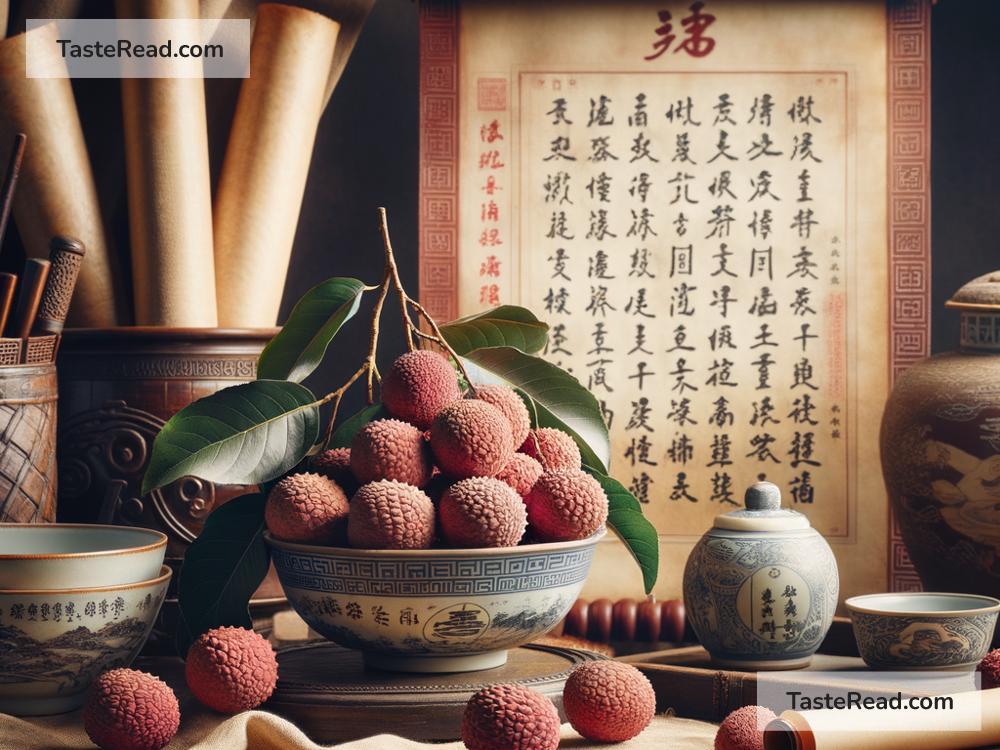The Ancient Significance of Lychees in Chinese History
Lychees, with their sweet, juicy taste and red, bumpy shells, have long been cherished as one of the most beloved fruits in Chinese history. But beyond being just a delicious treat, lychees hold deep cultural, historical, and even political significance in ancient China. This article explores the fascinating role this small fruit has played in shaping Chinese history and culture, all while keeping it simple and easy to understand.
A Symbol of Elegance and Royal Favor
Lychees have been cultivated in southern China for over 2,000 years. They are native to the warm subtropical regions of provinces such as Guangdong, Fujian, and Guangxi. In ancient times, lychees symbolized rarity and luxury. Because they could only grow in specific climates and were highly perishable, they became a valuable commodity, especially among the elite.
During the Tang Dynasty (618–907 AD), lychees gained legendary status thanks to their association with Emperor Xuanzong and his favorite consort, Yang Guifei. Yang Guifei was considered one of the Four Great Beauties in Chinese history, and the emperor adored her so much that he went to great lengths to obtain fresh lychees for her. Since lychees could not grow near the imperial palace in Chang’an (modern Xi’an), they were transported from the southern regions of China using a network of horse couriers. It is said these couriers rode day and night to ensure the lychees remained fresh upon arrival. The fruit became a symbol of the emperor’s devotion to Yang Guifei and showcased the lengths he was willing to go to please her.
The story of Emperor Xuanzong and Yang Guifei reflects not only the fruit’s rarity but also its association with romance, beauty, and privilege. Lychees were seen as a treasure worthy of being presented to royalty, further solidifying their status as a symbol of elegance.
The Role of Lychees in Trade and Economy
Lychees also played a significant part in ancient Chinese trade. Due to their unique flavor and limited growing regions, they became a sought-after product in tribute exchanges. Regional leaders would often send lychees as gifts to the imperial court, showing their loyalty and respect. This practice strengthened ties between southern provinces and the central government.
Despite their importance, transporting lychees presented a major challenge in ancient times. Without modern refrigeration or preservation methods, the fruit would spoil quickly. This difficulty in transportation made fresh lychees even more valuable. The fruit’s rarity outside its growing regions gave it a high status in trade, and it often served as a luxury gift.
Lychees in Chinese Literature and Poetry
Lychees frequently appeared in ancient Chinese literature and poetry, symbolizing nostalgia, longing, and indulgence. Poets often praised the fruit’s flavor and beauty in their works. One of the most famous mentions comes from the Tang Dynasty poet Du Mu, who wrote about lychees in his poem “Passing Through Huaqing Palace”:
“Chang’an looks back, the green hills leaning against the north,
Only then one sees the horse galloping to deliver lychees.”
This poem references the legendary story of Emperor Xuanzong sending couriers to deliver lychees to Yang Guifei. The imagery of swift horses and the effort required to transport the fruit highlights its status as a rare delicacy.
Lychees also symbolized fleeting moments of joy and the bittersweet passage of time. Their brief harvest season and delicate nature made them a metaphor for transience in life—a theme often explored in Chinese poetry.
Medicine and Health Benefits
Beyond their cultural significance, lychees were also valued for their health benefits. Ancient Chinese medicinal texts categorized lychees as a “warm” fruit, believing they could enhance energy and nourish the body. They were used to treat digestive problems, improve circulation, and promote overall vitality. Lychees were often reserved for the wealthy, who could afford to enjoy their health-enhancing properties regularly.
Modern science has confirmed some of these benefits, noting that lychees are rich in vitamin C, antioxidants, and other nutrients that contribute to good health. This connection between ancient beliefs and modern understanding further emphasizes the fruit’s enduring reputation.
Lychees in Modern China
Today, lychees remain an important part of Chinese culture. While they are no longer reserved for royalty, their popularity has spread across China and the world. Thanks to advancements in farming and transportation, fresh lychees are now broadly available during their harvest season, from May to July.
In modern China, lychees are not just consumed fresh. They are used to make juices, wines, desserts, and even savory dishes. Their versatility reflects the continued admiration for this ancient fruit.
Conclusion: A Fruit Full of History
Lychees are more than just a delightful snack—they are a fruit with a rich history full of cultural meaning. From their association with love and beauty during the Tang Dynasty to their role in trade and poetry, lychees have left a lasting mark on Chinese history. They symbolize luxury, devotion, and the enduring connection between humanity and nature.
Whether eaten fresh or admired in stories and poems, lychees remain a treasure that reflects the elegance and depth of Chinese culture. So next time you enjoy a lychee, take a moment to appreciate its ancient roots and the journey it has taken through history!


